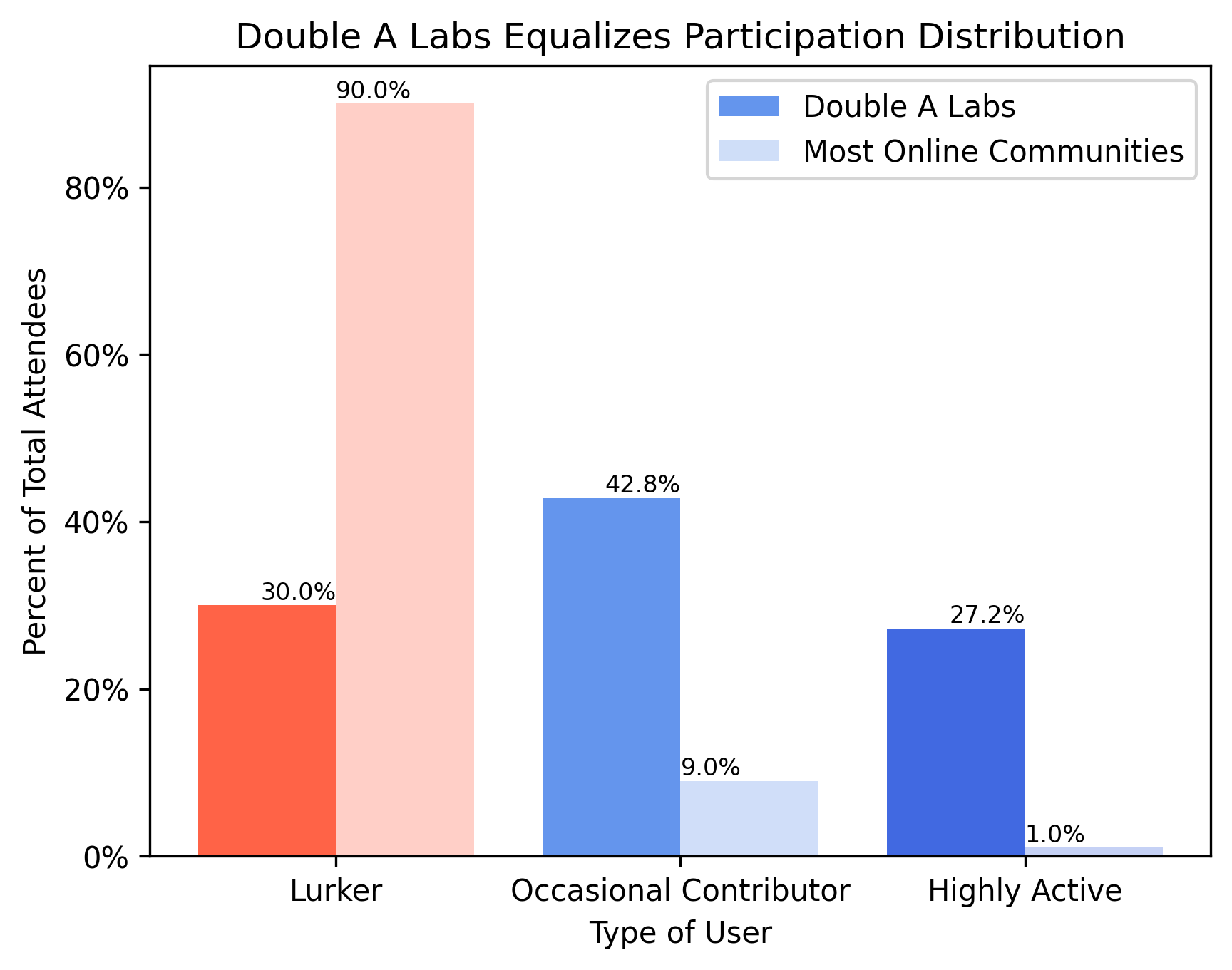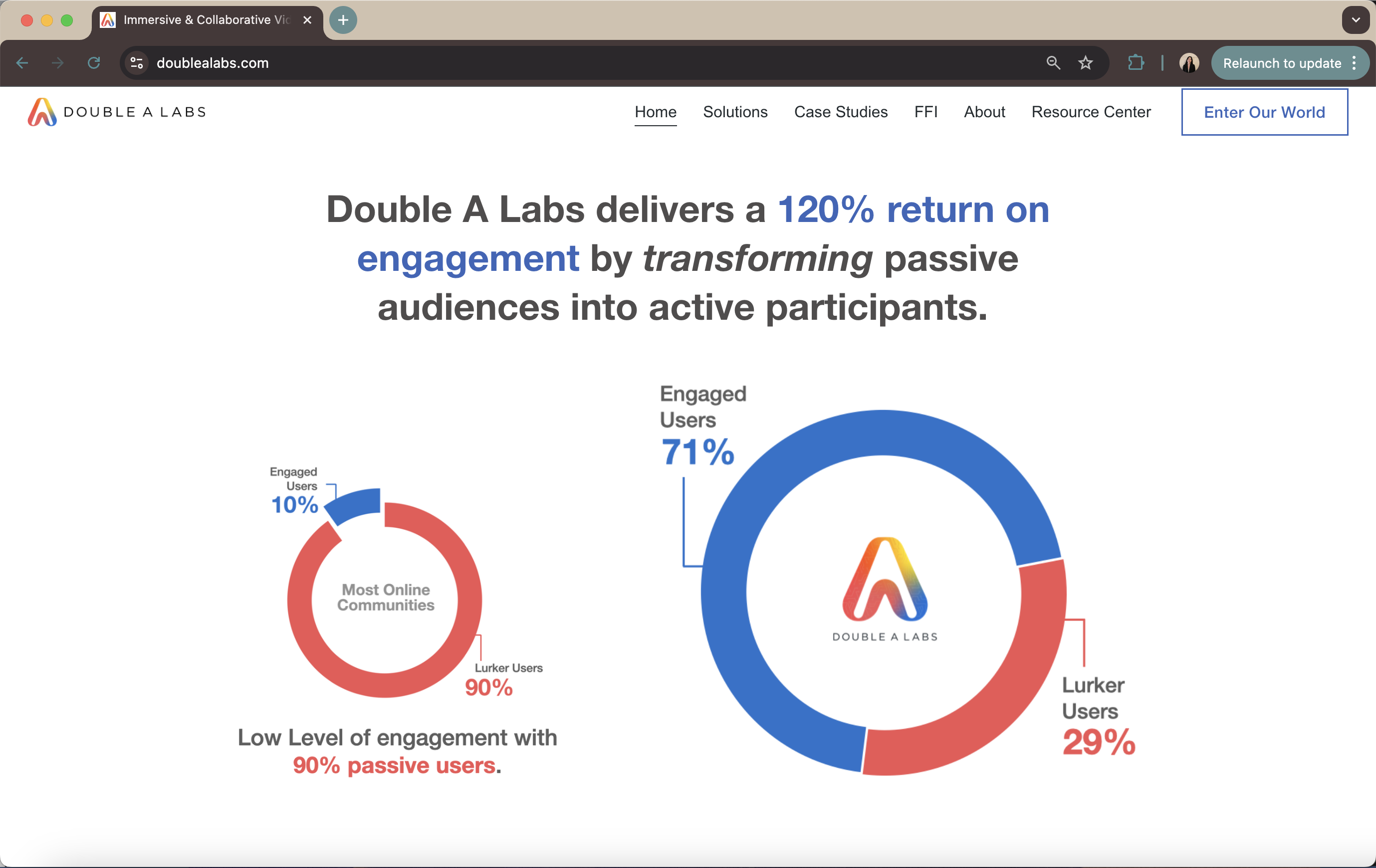Search Data Analysis Projects
Reducing Participation Inequality
Market analysis and benchmarking competitive metrics to aid marketing strategy
Crypto Clustering
Predicting price change effects on cryptocurrencies through unsupervised ML
To Fund or Not To Fund?
Predicting organization success to inform a nonprofit's funding strategy
The Daily Commute
Mapping post-pandemic Citi Bike travel patterns across New York City
Unicorns Do Exist
Analyzing and mapping the top startup ecocystems around the globe
The Vacation Planner
Pulling global weather and hotel data to help you plan your next big trip
Engagement Analytics
A comprehensive analysis on event engagement to increase client satisfaction
A Credit Risk Predictor
Forecasting borrower creditworthiness to inform lending strategy
It's Raining in Hawaii
Exploring annual precipitation patterns in Hawaii to aid travel planning
Reducing Participation Inequality
In the summer of 2024, I worked as a UX Analyst Intern at Double A Labs, an Austin-based startup delivering a virtual event platform to businesses and brands. Through clickable items and creative world environments, Double A aims to 1) increase productivity and engagement for remote teams, and 2) faciliate community-based marketing for brands. As part of my internship, I examined internal company data and competitor data to quantify the impact of our platform on user engagement and participation.
Participation Distribution
One of the data points I focused on was participation distribution. In any online platform, a user can be categorized according to their activity. There are typically three categories: 1) Lurkers, who don't contribute content and instead simply watch and observe, 2) Occasional Contributors, who contribute from time to time, and 3) Highly Active Users, who drive most of the content creation and engagement on the platform.

The most commonly cited participation distribution for online communities is 90% Lurkers, 9% Occasional Contributors, and 1% Highly Active Users. This is known as participation inequality. Through examining user behavioral data from all of Double A Labs' events in the past year, I found their participation distribution to be much more equal than other online communities.
Compared to 90% Lurkers and 1% Highly Active Users, Double A Labs boasts 30% Lurkers and 28% Highly Active Users. Knowing this discrepancy is important. When businesses see a 30% Lurker rate without knowing the underlying context, they may be misled into thinking that the platform is ineffective. However, knowing that the typical Lurker rate for online communities (social networks, forums, multi-user communities, etc.) is 90%, we can see that Double A Labs outperforms the average online platform. This can be a particularly decisive factor for brands looking to bolster their community engagement.
Impact
This analysis quantified Double A Labs' impact on user participation and engagement. The results have been implemented into company marketing materials, including their website home page.

Code
The Github repository for this project is not available due to the use of company data.